After the darkness and gloom of January and Blue Monday, February brings fresh hope of new life as nature stirs after its winter hibernation. The shortest month of the year, it marks the final month of the winter season and heralds the dawning of spring.
In February, it can also start to feel noticeably lighter each day which is always a boost after shorter daylight hours. This extra light makes heading for walks to spot wildlife a little easier, so why not see what you can spot this month?
Even in the depths of winter the UK, there is a surprising amount of species to spot and wildlife spectacles to witness. From beautiful waxwings to common spawning frogs, here is our guide on the best wildlife sounds and sights to spot in February.
- Best winter wildlife spectacles in the UK
- How to care for wildlife in your garden over winter
- February foraging guide: best foods to find and recipe ideas
What wildlife can you see in February?
There's plenty of wildlife to spot in February, such as frog spawning, blooming snowdrops, catkins and singing mistle thrushes and waxwings.
Mistle thrush song
By the end of January, the thrushes are already singing, especially our largest resident member of the family, the mistle thrush – one of Britain's sweetest-sounding songbirds. Its normal flight call is a rapid, trident series of clicks, like one of those old fashioned rattles that football fans used to cheer on their teams in the 1960s.
But its wonderful wistful, slightly mournful song of short, drifting phrases is at its best now – a perfect accompaniment to wild windy days of late winter. The song has an elusive quality and it can be hard to pin down the singer.

Drifts of snowdrops
It is the flower of February and there are many locations around the UK that allow you to see great drifts of nodding white flowers in spectacular settings.
After the darkness of winter, snowdrops are a welcome and early sign that spring is on its way. Our snowdrop guide looks at the best snowdrop walks in the UK, snowdrop facts and how to grow your own.
The origins of UK snowdrops are a mystery – they are associated with purity and thus were planted around religious sites from the middle ages onwards so there is some question as to whether it is a native flower. Whatever the case, it is a welcome bloom in this most flowerless of months.
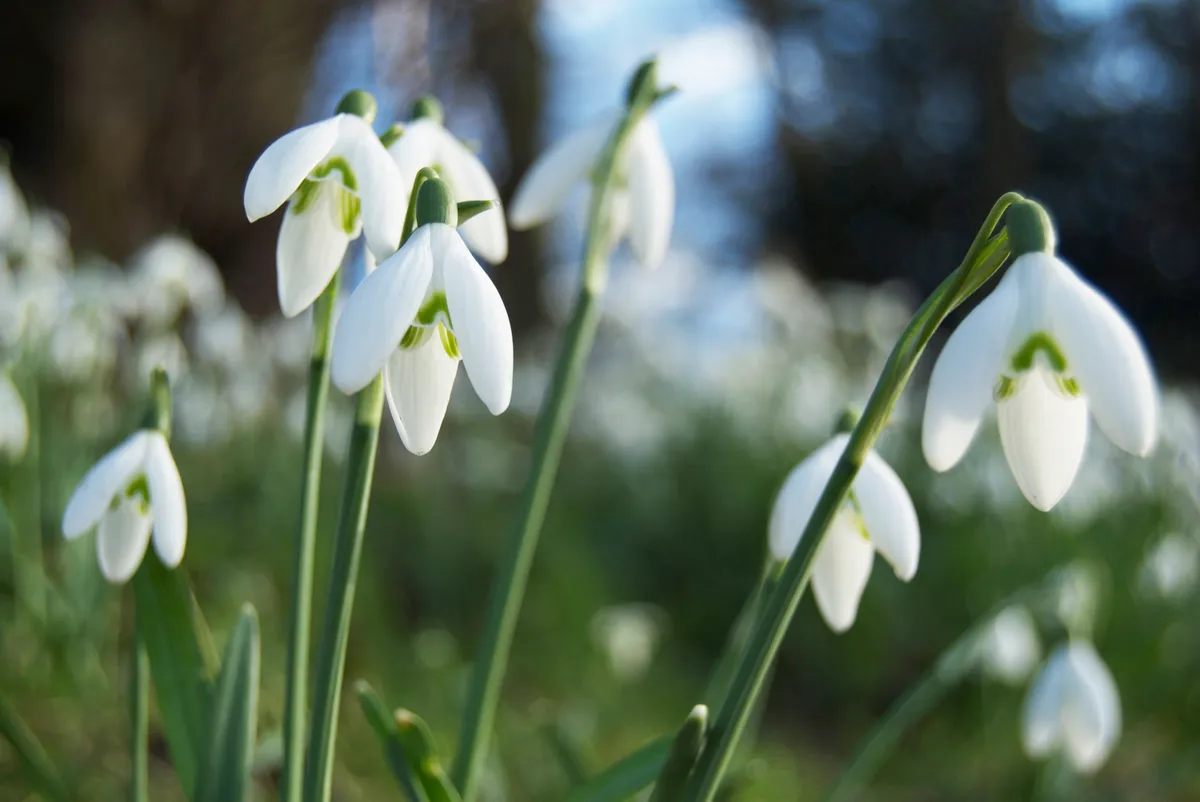
Roaming roe deer
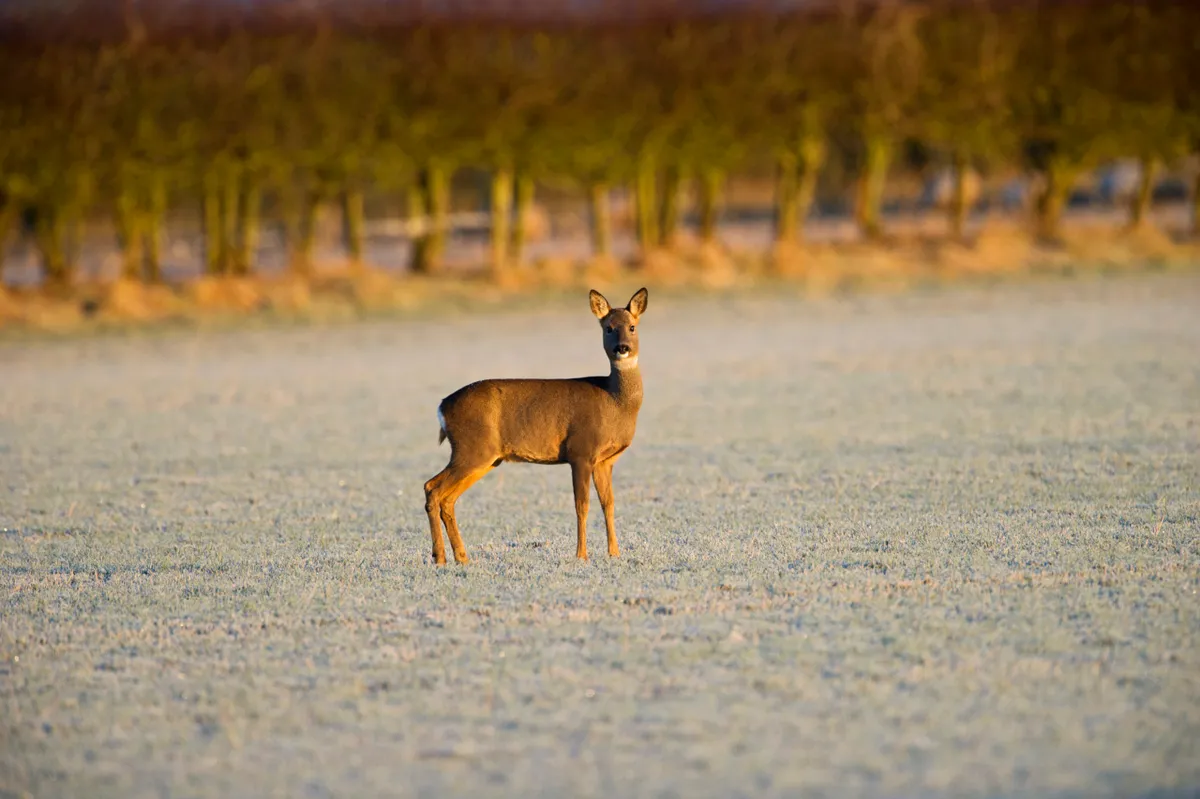
Bare hedges and leafless woods coupled with lengthening days mean that woodland wildlife is at its easiest to see now. Take a walk in any local wood and spend time looking beneath the browse line – below which most of the tree foliage has been eaten by deer. You should strike lucky and see roe deer.
Train journeys are even better – look along the margins of wintry fields and you’re bound to catch sight of small groups of deer.
Nuthatches in the garden
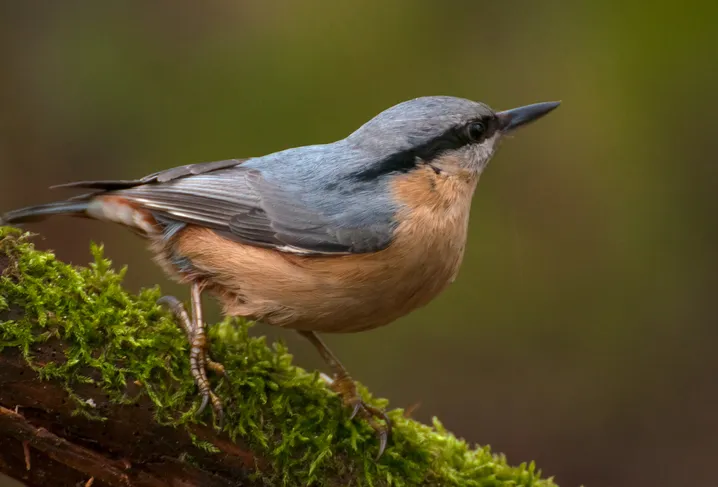
Another woodland species that is easier to see in winter due to the lack of leaves. This very smart, trim tree climber has a slate blue upper body and peachy undersides – making it similar to the jay.
It has an enormous and exotic vocal range – from metallic trills to clicks and a deep, distinctive tew, tew, tew call. Listen carefully and you might even hear the tap, tap, tap of its beak on bark or a nut that it is ‘hatching’. A regular garden visitor, the nuthatch loves peanuts.
Operating like a small grey-blue woodpecker, it scurries up tree trunks and along branches in search of insects, which it winkles from crevices with it stout, sharp bill. As its name suggests, it is also partial to nuts, which it holds in its claws and chips open with careful chiselling.
The ‘hatch’ part of the bird’s name comes from the old French word hach, meaning axe or hatchet.
Hart’s tongue fern

While most of our greenery is still dormant and even the grass is lacklustre, ferns are surprisingly glossy and verdant at this time of year. It’s worth stopping in damp and dark places to study them, if only for a few seconds.
The hart’s tongue is particularly spectacular and loves old walls. It has long, strap-like leathery fronds and can give a rainforest feel to familiar local woods – in fact, the presence of Hart's tongue fern is often an indicator that you're in an ancient woodland.
Feasting waxwings
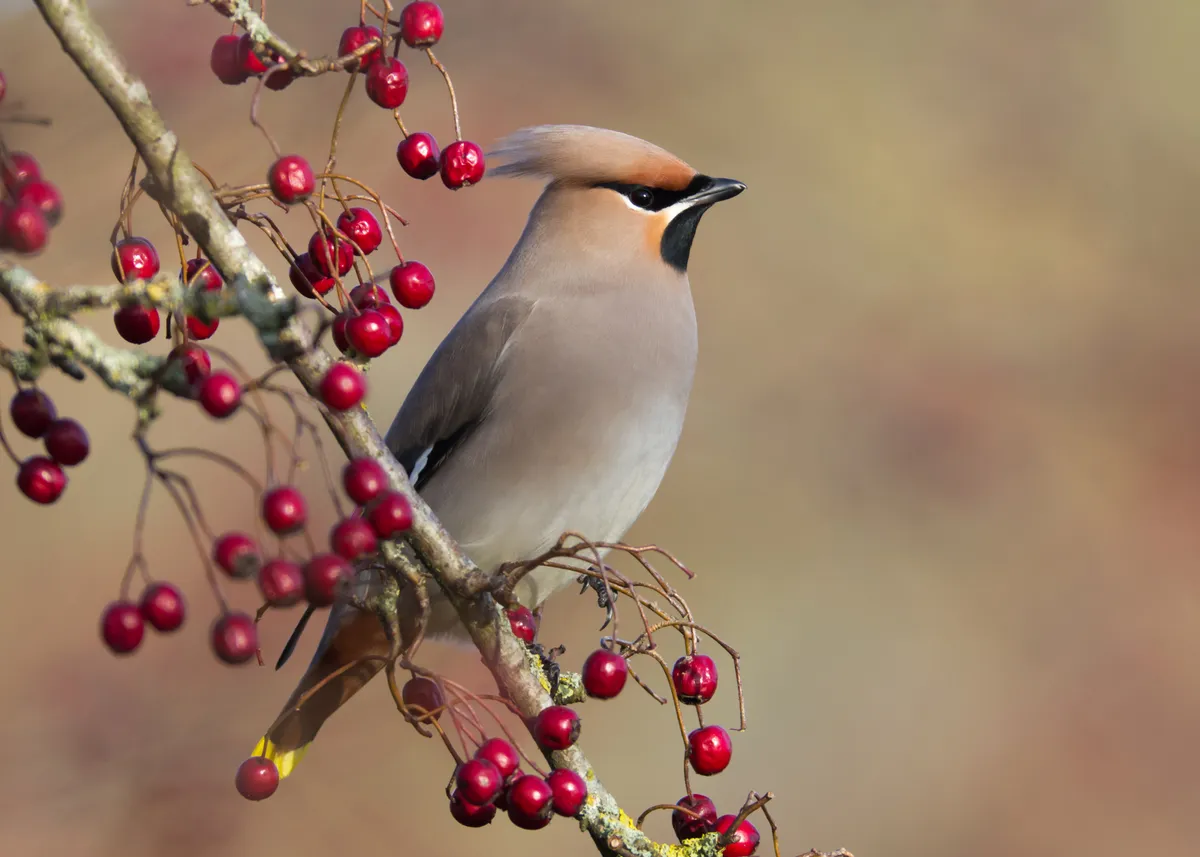
Arriving in small flocks from central Europe, these exotic peach-tinged birds with black eyeliner and debonair crests are a sign that it’s even colder on the continent than it is here. Waxwings love hedgerow berries.
Dangling hazel catkins

Christmas is long forgotten but one of our most common small trees hasn’t got the memo. Hazels drip with catkins – the male flowers – long before the leaves emerge, glimmering like little lights in the low, slanting sun of February.
Hazel trees are monoecious, which means that male and female flowers (catkins) appear on the same tree. While the males are big and obvious, the female flowers look like tiny buds.
Common frog spawning
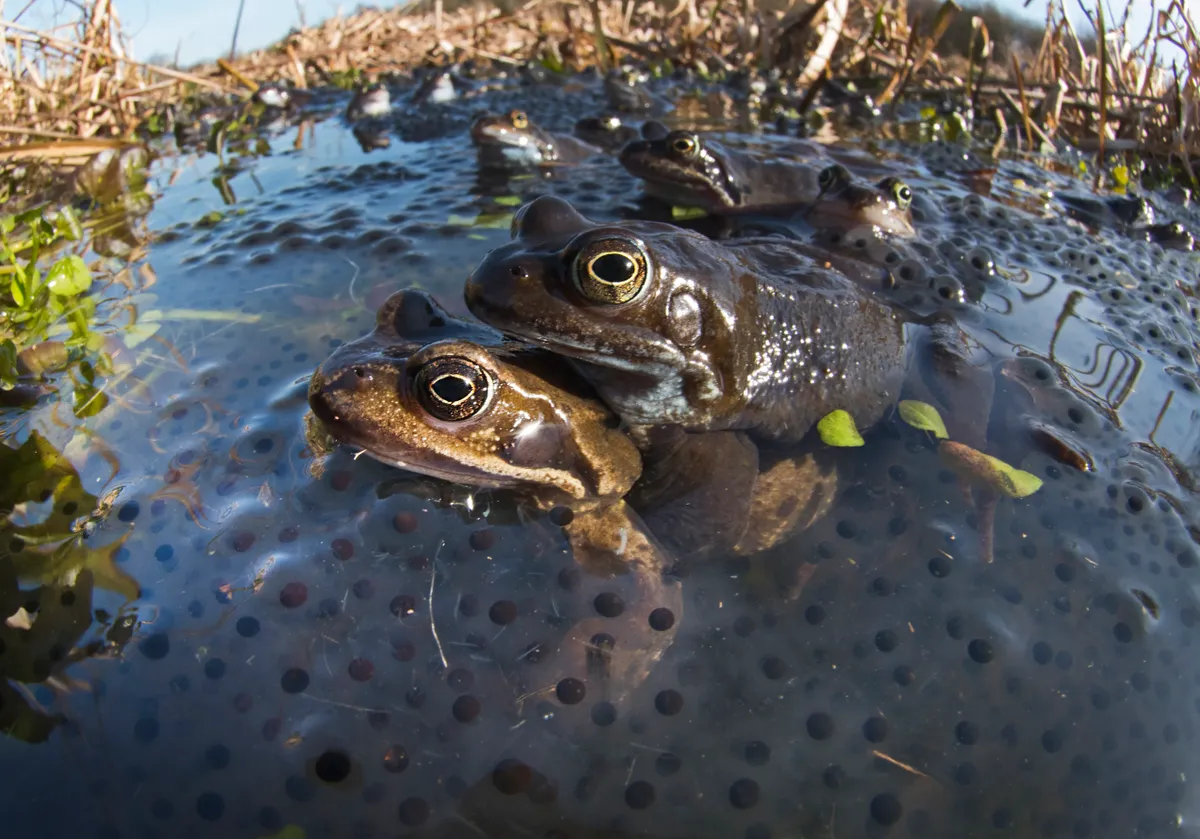
It pays to watch out for a stretch of warmer days on the long-range weather forecasts. This will stir frogs and toads into breeding action so, if you have a pond, keep popping out to check it – you should see ripples from frogs or toads diving away at your approach, coupled with excitable croaking.
Having emerged from the sanctuary of hibernation, they gather to breed. If you have frogs in your garden, one morning you will look out to see the pond margins suddenly billowing with spawn – the result of a frenzy of mating activity overnight.
Each female can lay up to 3,000 eggs so in a good year you might be inundated with tiny tadpoles. But dozens of different predators – from dragonfly larvae and goldfish to adventurous blackbirds – enjoy feasting on tadpoles and very few survive to make the transformation to the froglet stage in early summer. Fewer still make the long journey to adulthood three years later.
Great crested grebes courting
Love is in the air in February, so head to your local lake to witness the great crested grebe's incredible mating dance. If your local park has a decent sized lake, you might find yourself with a front row seat at one of nature’s great water ballets. It’s at this time of the year that great crested grebes perform their courtship displays.
Grebes have a slight resemblance to ducks but are more graceful on water (they are hopeless on land). They are also superb divers and can outpace their fish prey underwater. The great crested is the most handsome of our native grebe species, with a long sharp bill, fiery orange head plumage and a spiky crest. This headgear is an essential part of the mating dance.
When a male and female great crested grebes meet, both birds raise their crests, flare their fiery throat feathers and mantle their wings. Alternately, the birds bob and shake their heads, remaining beak to beak for long periods. One bird may then dash away – the retreat display – only to suddenly turn and face its pursuing partner. The birds then make synchronised dives and emerge holding weed in their bills. They then rear up, chest to chest, feet paddling madly and offer each other a weedy present. Though the water is frothing below them during this ‘weed dance’, the two birds remain remarkably poised.
If the dance is successful, the two birds form a lasting bond. The female will allow the male to mate with her and the pair will begin building a raft from vegetation on which to nest.
Great crested grebes are now a relatively common sight on large ponds and lakes but they almost went extinct in the UK in the 19th century, as their orange tufts were much sought-after as decorations for fashionable hats.
Primroses blooming
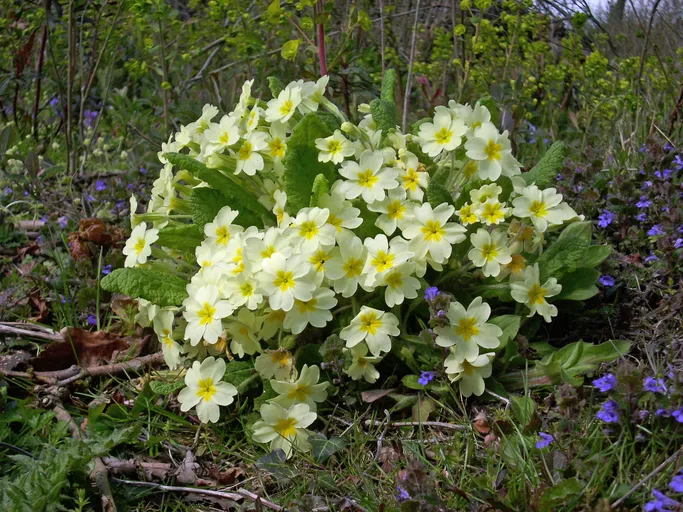
This cheerful yellow woodland and hedgebank flower is the prima rosa because it was deemed the first flower of the year (though the snowdrop would probably have a say in the matter). It was once picked in huge numbers and sent on trains from the countryside to London, where it would be sold in small bunches at Easter.
This picking was seen by some as the reason for the flower’s decline across the country. However, recent studies show that agricultural herbicides and removal of roadside verges and hedgerows is the more likely cause.
Primroses are edible and easy to grow at home, so they make an excellent edible flower.
More wildlife to spot on your adventures

